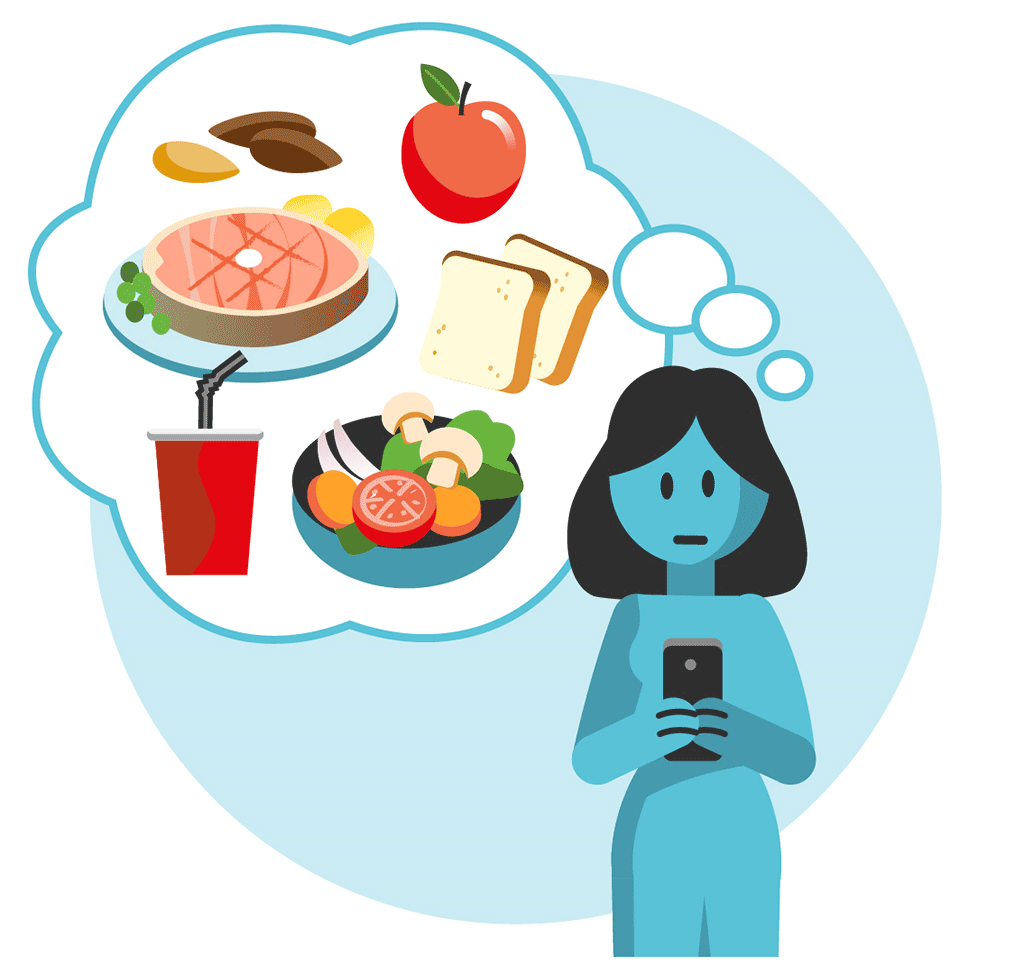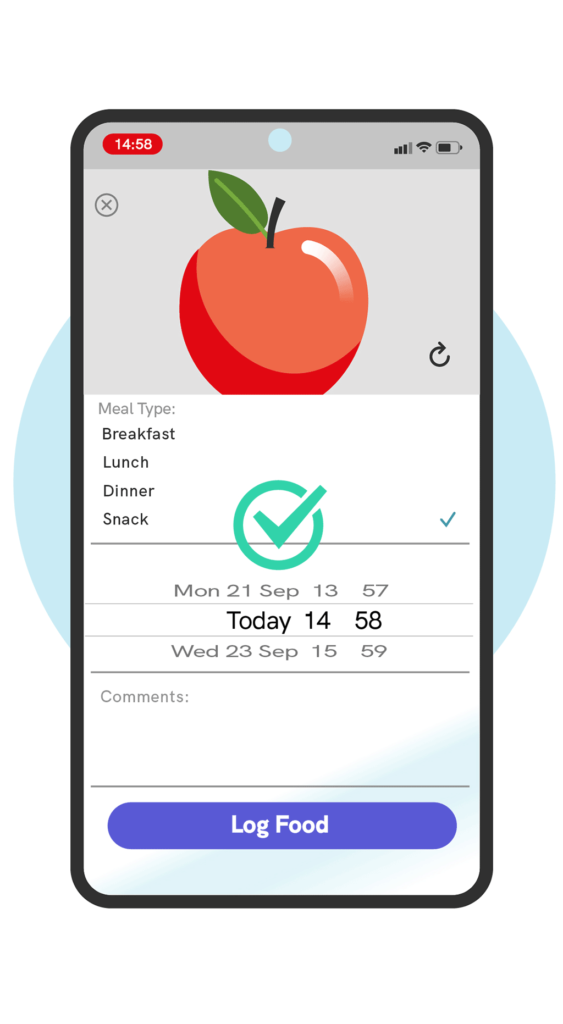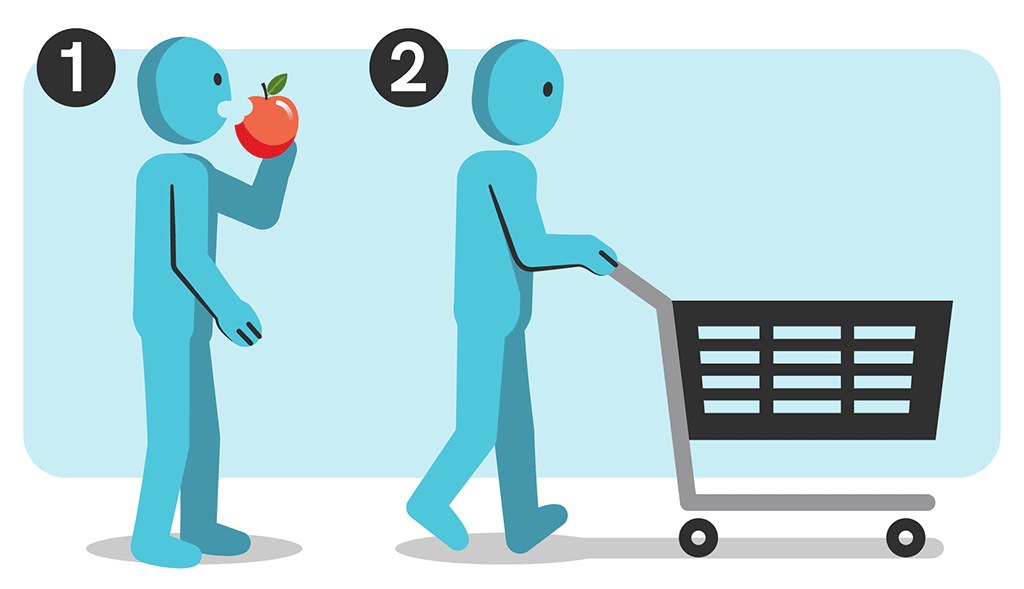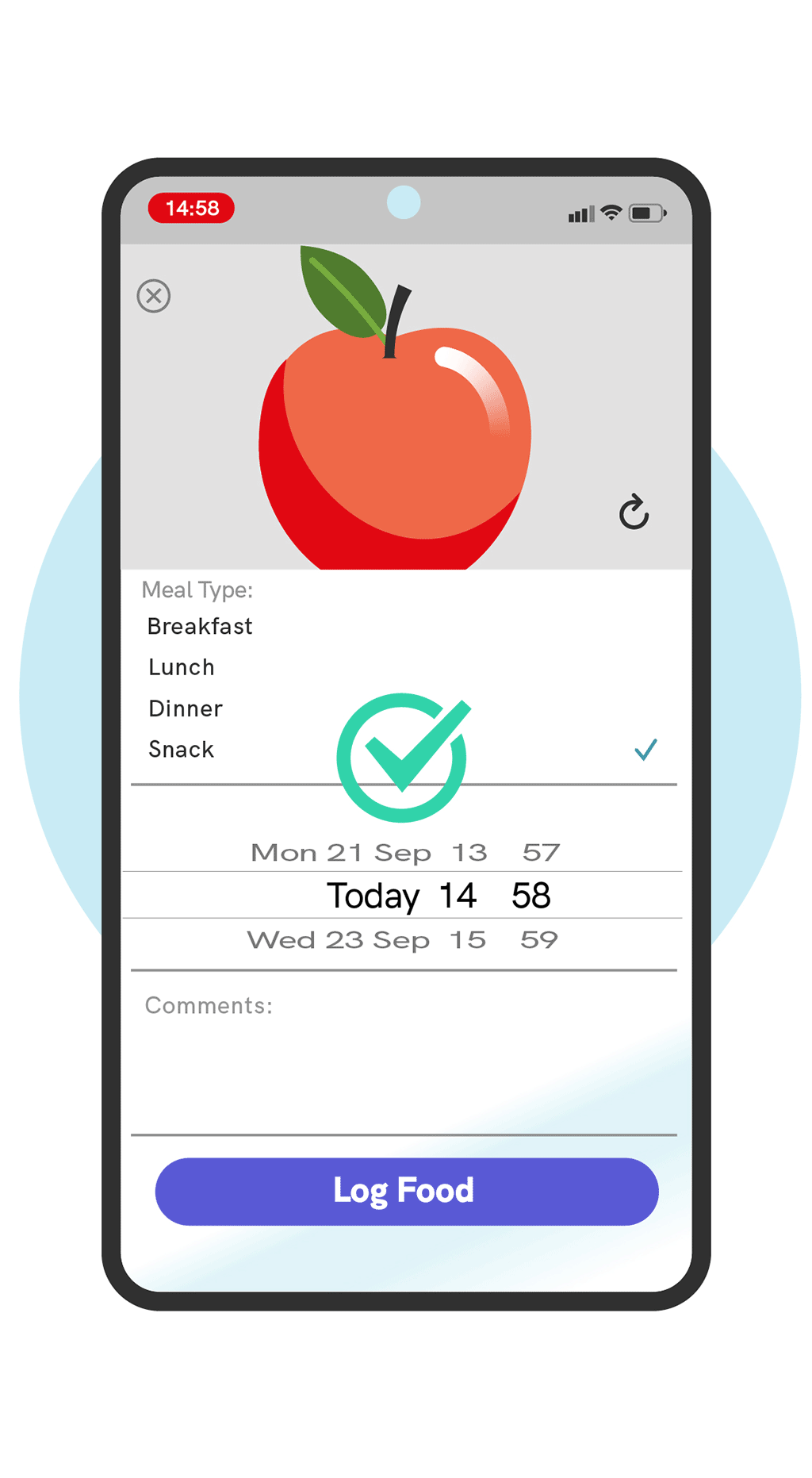Food Logging
A food diary can help you understand how your body reacts to different food items. It’s an excellent way to discover invaluable details about your relationship with food and to uncover what you might be mindlessly munching on.

A food diary can:
- Show you how you feel before, during, and after you eat
- Help you lose weight by making you aware about unhealthy food choices and habits.
- Help you and your GluCare Care Team understand how your body is reacting to different food items.
What to include in a food diary
The secret to successful food logging is accuracy and consistency.

Use the photo food logging system in the GluCare App to take a picture of your meals, snacks and beverages. In the note section add:
- What are you eating? Write down the specific food and beverage consumed and how it was prepared (baked, broiled, fried, etc.). Include any sauces, condiments, dressings, or toppings.
- How much did you eat? List the amount in household measures (cups, teaspoons, tablespoons). If possible, it is best to weigh and measure your food. If you are away from home, do your best to estimate the portion.
- When are you eating? Noting the time that you’re eating can be very helpful in identifying potentially problematic times, such as late-night snacking.
- What else are you doing while eating? Are you on the computer, watching TV, or talking with a family member or a friend?
- Who are you eating with? Are you eating with your spouse, children, friend, or a colleague, or are you alone?
- How are you feeling as you’re eating? Are you happy, sad, stressed, anxious, lonely, bored, tired?


Leave a Reply